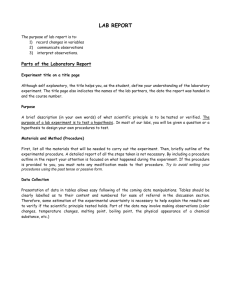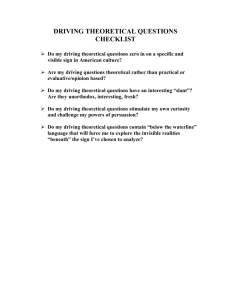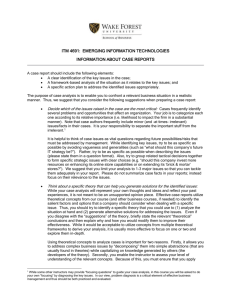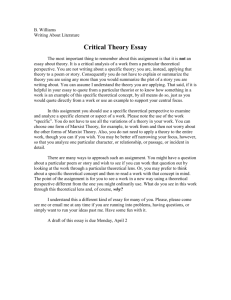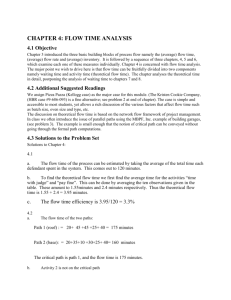Contending Ideologies of Political Economy I: Liberalism and
advertisement
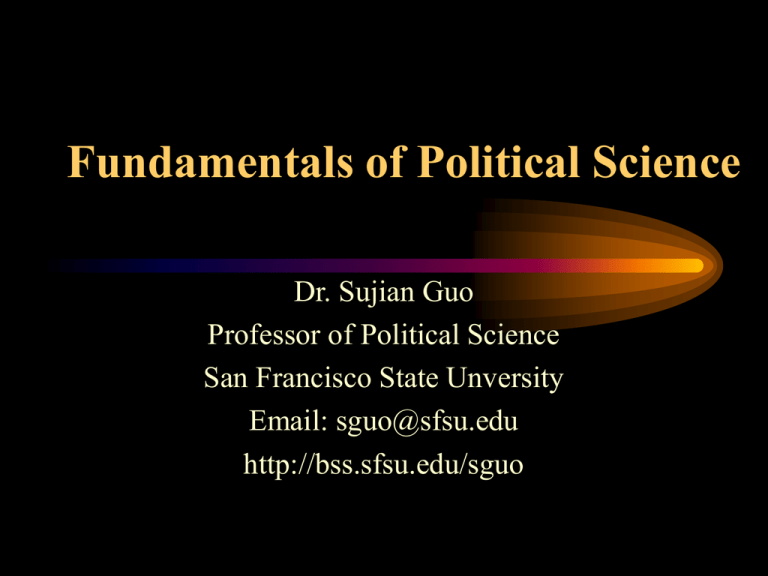
Fundamentals of Political Science Dr. Sujian Guo Professor of Political Science San Francisco State Unversity Email: sguo@sfsu.edu http://bss.sfsu.edu/sguo State, Country, and Nation • A state is an organized political community, occupying a territory, and possessing internal and external sovereignty which successfully claims the legitimate use of coercion or force over its territory and population. • Country is the geographical area. • Nation designates a people State theories Postwar Revival of Interest in Theorizing the State • The postwar revival of theoretical interest in the state in comparative politics and comparative political economy is a result of the worldwide trend in the expansion of the role of the state since the Great Depression in 1930s. • The first major postwar revival of theoretical interest in the state began in Western Europe during the mid-1960s. This was mainly led by Marxists interested in the general form and functions of the capitalist state; but a key supporting role was played by Marxist-feminists who extended such ideas to the patriarchal capitalist state. • A second revival during the late 1970s involved many more theoretical approaches or currents that attempt to “bring the state back in” which was originated in the United States. However, such theoretical approaches invited critiques from Foucauldian theory, feminism, and other theoretical approaches in the 1990s. What factors have contributed to the expansion of the role of the state? 1. In the industrialized world, the emergence of the managerial state to combat the crisis of capitalism during the depression. 2. The widened scope of executive power during WW II and the growing state regulative and welfare functions in the post-WW II 3. The Third World countries in search of developmental model to promote economic independence and development, which called for the state to play a major role in restructuring economic and social systems. 4. However, the state was further brought back in comparative politics and comparative political economy in the 1970s, because of the economic success of the developmental state in the NICs. Society-Centered vs. State-Centered Approaches Society-centered Approaches For the society-centered approach, the state is largely treated as a dependent, constrained, manipulated, and responsive entity. Policy formation is understood as a response to the expectations and demands of those socioeconomic forces who control the largest armory of effective resources. Both the constraint of the state and the predomination of the private actors and groups are to be understood in terms of variables outside the parameter of the state. Society-Centered vs. State-Centered Approaches State-centered Approaches For the state-centered approach, the state is largely treated as an independent, regulative, manipulative and active entity and an independent actor. The state is seen to be autonomous in initiating policies and turning its own policy preferences into authoritative actions. Taking the state seriously as an independent variable involves more than searching for state-centered account of high and low autonomy, but entails the bringing together of statecentered and society-centered approaches in a meaningful manner. Theories of the State 1. Liberal or pluralist approaches 2. Marxist or class-analytic approaches 3. Weberian or state-centric approaches Liberal or pluralist approaches (1) believe that all human beings are created equal, that they are entitled to certain unalienable human rights, including the rights to life, liberty, and property, and that government exists to protect those rights and rule according to the consent of the governed. (2) The primary motivating force is the competition between individuals who seek to maximize their self-interests, satisfaction, or utility through the free market. Liberal or pluralist approaches (3) Therefore, these theorists emphasize the role of the market mechanism through which economic activity and allocation of resources are coordinated while the state is a “night-watch man” providing the conditions under which markets can be allowed to operate as freely as possible. (4) They view the state as a neutral arbitrator between the competing forces in society. Since society comprises individuals and interest groups in competition with one another for economic resources and access to power, the state acts in a neutral way to ensure equality between the rival demands and to balance these pressure groups in order to secure political and social stability. Marxist or class-analytic approaches (1)Anchor the analysis of the state in class analysis in terms of the state’s relationship to the ownership system as the foundation of class relations and its capacity to promote the fundamental, collective interests of capital. (2)Marxism rejects the starting point of liberalpluralism (individuals) and argues that it is impossible to discuss any individual without at the same time discussing the total social relationships within which individuals interact with one another. Marxist or class-analytic approaches (3) The most fundamental of these relationships involves the “mode of production” and the “social relations of production” which condition the social, political, and economic life process in general and the class conflict in particular. (4) Therefore, the state is seen as the coercive instrument of the ruling class, rather than an entity of providing neutral procedural guarantees for a free competition among classes, groups, and individuals. The state is a committee for managing the common affair of the whole ruling class. Weberian or state-centric approaches (1)Reject both class- or capital-theoretical account and individualistic based explanation and contend that the state can exercise autonomy in its own right and in pursuit of its own distinctive interests. (2)In other words, they emphasize the ways in which states constitute autonomous sources of power and operate on the basis of institutional logics and dynamics with variable forms of interaction with other sources of power in society or the ways in which the actions of the state are rooted in the interests, motivations, and strategic dilemmas of the people who occupy positions in the state. Weberian or state-centric approaches (3) Therefore, the state can neither be neutral with respect to organized interests, nor be understood simply as a class bias, but has its own moral end and pursues the common good for all. It rejects both liberalism and Marxism in a sense that the state plays an independent role in policy initiative and in the pursuit of the common good for the society, whereas both liberalism and Marxism basically see the state as determined and manipulated by the economic and social forces. (4) It is this tradition that has shaped the revival of interest in the state or the theoretical current, named “neo-statism,” to “bring the state back in” as a central explanatory variable in social analysis - the state apparatus should be treated as the independent variable in explaining political and social events. Some Main lines of Criticism • 1. Neo-statism is one-sided because it focuses on state and party politics at the expense of political forces outside and beyond the state. In particular, it seems to substitute “politicians for social formations (such as class or gender or race), elite for mass politics, political conflict for social struggle” (Gordon 1990: 181). • 2. Neo-statism implies that politically autonomous state managers can act as effective agents of economic modernization and social reform. But, no neo-statist case studies reveal the harmful effects of their authoritarian or autocratic rule. • 3. Neo-statism rests upon a fundamental theoretical fallacy. It assumes there are clear and unambiguous boundaries between state apparatus and society, state managers and social forces, and state power and societal power. It implies that the state (or the political system) and society are mutually exclusive and self-determining, each can be studied in isolation. It rules out hybrid logics such as divisions among state managers due to ties between state organs and other social spheres and many other forms of overlap between state and society.

